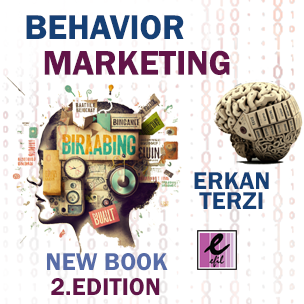In the realm of modern marketing—especially with the growing importance of social engagement and brand perception—the concept of Word-of-Mouth (WOM) Marketing continues to play a pivotal role in strengthening brand reputation and customer loyalty. As social media platforms have surged in popularity, the influence of WOM has multiplied significantly, turning into a digital amplifier for brand narratives. These platforms offer a window into consumer behavior, enabling brands to monitor, interpret, and act upon real-time data. Behavior-driven marketing, in particular, thrives on these insights, helping marketers craft targeted strategies grounded in user interactions. This puts substantial responsibility on digital marketing and CRM teams to enhance the effectiveness of their outreach.
Behavioral marketing focuses on delivering the most relevant ads and content by analyzing a user’s purchase history, demographic background, and online behaviors. This precision is one of the key reasons WOM has gained such power in the digital landscape. Social media now acts as a megaphone for consumer experiences—allowing positive (or negative) feedback to spread at lightning speed. U.S.-based companies, in particular, have leveraged this to build loyalty and expand brand visibility.
Take Starbucks, for example. By putting customer experience at the heart of its social media strategy, the company has inspired widespread positive WOM. It actively showcases user feedback and fosters direct engagement, leading to consistently high customer satisfaction and brand loyalty. Tesla offers another strong case—its innovative vehicles and the outspoken social media presence of CEO Elon Musk have driven organic, influential WOM. Tesla owners frequently share testimonials about performance and eco-consciousness, reinforcing the brand’s credibility. Musk’s posts often generate more interaction than the brand’s official channels—underscoring the value of personal influence in today’s digital era.
Social media has dramatically expanded the reach of WOM. While traditional WOM may have been confined to small circles, social media posts can now go viral, reaching millions. This dual-edged sword provides both unprecedented opportunity and real risk. Negative experiences can spread just as rapidly and tarnish a brand’s reputation in an instant. A glowing customer review, on the other hand, can trigger widespread goodwill. Collaborations with influencers are also key to maximizing WOM potential. To boost their digital WOM influence, brands should emphasize five key areas:
- Official brand social media accounts
- Consumer-driven community channels that facilitate interaction
- Carefully selected influencer partnerships aligned with target audiences
- Company leadership profiles, especially from C-level executives
- Joint campaigns with celebrities whose audience matches brand positioning
Academic literature reinforces the importance of WOM in marketing. Berger and Milkman’s 2012 study found that the emotional intensity of content plays a major role in whether people share it online. Their findings suggest that understanding emotional drivers is key to crafting viral content and predicting what will resonate with users. As discussed in the behavioral marketing framework on consumer behavior theories, social transmission is vital for market adoption—and brands must learn how to tap into these dynamics effectively.
Artificial intelligence and machine learning technologies now allow brands to track and interpret WOM on social platforms with high precision. Tech giants like Google and Facebook provide a suite of tools that brands can use to identify trends, measure sentiment, and adapt strategies accordingly—making digital marketing even more data-driven and impactful.
The Keller Fay Group has also emphasized how digital WOM is crucial for building long-term trust and loyalty. Their research indicates that online WOM outperforms traditional ads in terms of authenticity and influence. Nike serves as a prime example of this strategy in action: its #JustDoIt campaign not only inspires users to engage but also encourages them to become active content creators. Nike’s partnerships with high-profile athletes have further expanded its WOM reach and audience impact.
However, negative WOM can seriously threaten a brand’s public image. Unfavorable experiences can go viral, causing long-term harm. This highlights the need for effective crisis communication. A cautionary tale is United Airlines’ 2017 PR crisis, where footage of a passenger being forcibly removed from a flight spread rapidly online. The delayed and inadequate response led to a significant stock dip and long-term brand damage. The incident underscored a critical lesson: how brands manage a crisis can be just as important as the crisis itself.
To minimize reputational damage, brands must respond to crises swiftly, with empathy and transparency. Accepting responsibility, offering clear information, and providing fair compensation can go a long way in restoring consumer trust. However, crisis response should not begin after an incident—it must be proactive. Brands should implement early-warning systems and scenario planning to prepare for potential reputational risks before they escalate.
Today, WOM is not just a traditional marketing tool—it has become a foundational pillar of digital strategies, made even more powerful by social media and behavioral data. By tapping into the right insights and crafting authentic engagement tactics, brands can convert positive experiences into long-term loyalty and equity growth.
To succeed in the digital age, brands must harness the power of WOM by investing in genuine communication, customer-centric innovation, and seamless user experiences. Case studies and academic research show that this strategy not only drives brand value but also sets the stage for sustainable competitive advantage.
In conclusion, while social media opens up new doors for brand storytelling, it also demands that brands remain vigilant, strategic, and responsive. With the right approach, the full potential of WOM in digital marketing can be unlocked.


